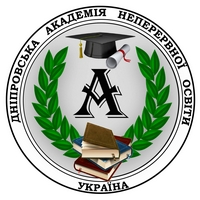IMMERSIVE TECHNOLOGIES AND THEIR IMPACT ON THE MODERNIZATION OF THE MODERN EDUCATION SYSTEM
Abstract
The use of immersive technologies opens up many prospects for improving the quality of the educational process. According to scientific studies, immersive technologies improve students' spatial understanding and memorization, allowing them to experience learning from the first person, to see everything that is happening around them. Such technologies provide visual learning and contribute to students' overall understanding of more complex subjects, theories and languages. Some researchers single out several unique possibilities of virtual and augmented reality, namely immersion in a simulated environment, multimodal interaction, concretization of imagination. In general, according to most researchers, these technologies ensure the presence of users due to the high accuracy of the representation of three-dimensional virtual objects and the ability to simulate operations and procedures of abstract concepts. Currently, the Ukrainian education system is taking only the first steps in the direction of using immersive technologies. A fairly small number of Ukrainian educators have started using them in the educational process. Accordingly, the problems and prospects of introducing virtual and augmented reality technology into the educational process of Ukrainian educational institutions have not been sufficiently researched. This publication analyzes the impact of immersive technologies on the modernization of the modern education system. The essence of immersive technologies and their impact on the transformation of learning processes is revealed. Identified types of immersive technologies. The main problems of introducing immersive technologies into the educational environment of Ukrainian educational institutions are analyzed. The results of a sociological study, the purpose of which was to study the public opinion of teachers regarding the assessment of the impact of immersive technologies on the educational environment, identify problems and features of the introduction of these technologies into the modern education system, are presented. According to the results of a sociological study, the most common foreign and domestic AR and VR applications, which are used by teachers in general secondary education institutions and contribute to the effectiveness of learning processes, have been determined. The main trends of the further implementation of immersive learning in the modern education system of Ukraine are considered.
References
2. Іванюк І. В., Овчарук О. В. Аналітичний звіт. Результати онлайн-опитування готовність і потреби вчителів щодо використання цифрових засобів та ІКТ в умовах карантину: 2021. Київ: ІІТЗН НАПН України. URL: https://lib.iitta.gov.ua/724564 (дата звернення: 11.11.2023).
3. Іванюк І. В., Овчарук О. В. Результати онлайн опитування «Потреби учителів у підвищенні фахового рівня з питань використання цифрових засобів та ІКТ в умовах карантину»: аналітичні матеріали. Київ: ІІТЗН НАПН України. Вісник НАПН України. 2020. Т. 2. № 1. DOI: https://doi.org/10.37472/2707-305X-2020-2-1-7-1 (дата звернення: 12.11.2023).
4. Лещенко Т. О., Жовнір М. М., Юфименко В. Г. Імерсивні технології в мовній освіті: від теорії до практичного впровадження. Інноваційна педагогіка. 2022. Т. 2. № 54. С. 13–17. URL: http://repository.pdmu.edu.ua/bitstream/123456789/19969/1/Immersive_technologi es_in_language_education.pdf (дата звернення: 09.11.2023).
5. Литвинова С. Г. Використання сервісу доповненої реальності Blippbuider учителями природничо‐математичних предметів в освітній практиці. Науковий вісник Ужгородського університету. 2023. № 1 (52). С. 98–105. DOI: https://doi.org/10.24144/2524‐0609.2023.52.98‐105 (дата звернення: 11.11.2023).
6. Литвинова С. Г., Буров О. Ю., Семеріков С. О. Концептуальні підходи до використання засобів доповненої реальності в освітньому процесі. Сучасні інформаційні технології та інноваційні методики навчання у підготовці фахівців:методологія, теорія, досвід, проблеми. 2020. № 55. С. 46–62. DOI: https://doi.org/10.31652/2412‐1142‐2020‐55‐46‐62 (дата звернення: 21.11.2023).
7. Тарангул Л., Романюк С. Використання технології доповненої реальності восвітньому процесі закладів вищої освіти. Проблеми освіти. 2022. № 1 (96). С. 187–204. URL: https://doi.org/10.52256/2710‐3986.1‐96.2022.12 (дата звернення: 27.10.2023).
8. Хміль Н., Галицька‐Дідух Т., Ван Цяньці. Використання віртуальної та доповненої реальності в українській освіті. Академічні візії. 2023. № 22. URL: http://dx.doi.org/10.5281/zenodo.8251886 (дата звернення: 26.11.2023).
9. V. Hill, H. Lee. Libraries and immersive learning environments unite in second life, LibraryHi Tech. 27 (2009). 338–356. URL: doi:10.1108/07378830910988487 (дата звернення: 27.10.2023).
10. L. Eutsler, C. S. Long. Preservice teachers’ acceptance of virtual reality to plan science instruction, Educational Technology & Society. 24 (2021). 28–43. URL: https://www.jstor. org/stable/27004929 (дата звернення: 27.10.2023).

 ISSN
ISSN  ISSN
ISSN 

